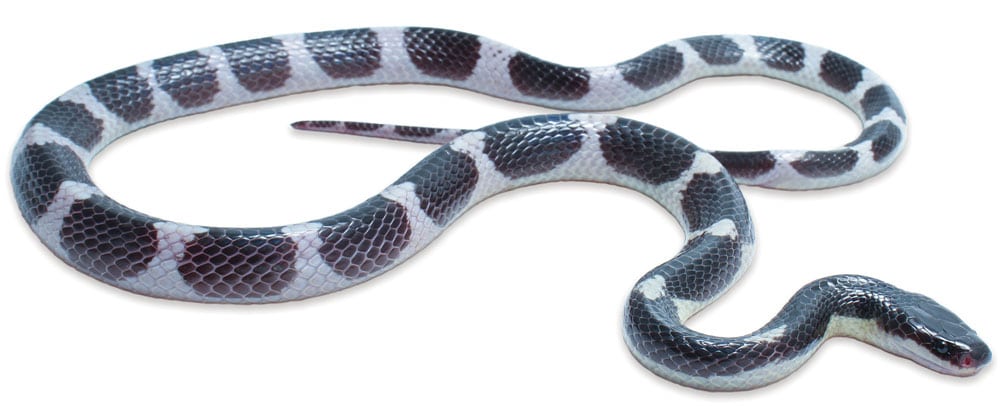The elapid snake was discovered in Ratchaburi Province in western Thailand. It hails from the Tenasserim Mountain Range.
Researchers have discovered a new venomous snake species of the genus Bungarus in Thailand. The elapid snake was discovered in Ratchaburi Province in western Thailand. It hails from the Tenasserim Mountain Range.
The snake, Bungarus sagittatus sp. nov. is in the family Elapidae and is the 18th snake species of the Bungarus genus. Snakes in this genus are found throughout much of Asia, from Southeast Asia to China, all the way through South Asia and into Iran. Thailand is known to be home to five species in the genus, including B. candidus, B. fasciatus, B. flaviceps, B. slowinskii and B. wanghaotingi. Bungarus sagittatus sp. nov makes Thailand home to six venomous snake species in the genus.

Paratypes in life showing the variation in different age class. A. Subadult female; B. Juvenile. Photo by Akrachai Aksornneam et.al.
Bungarus sagittatus sp. nov. has black and white crossbands, similar to those of most other snakes in the genus. In fact, some are known by the common name black-and-white banded kraits, even though the venomous krait species differs morphologically. Those of the B. candidus, B. multicinctus, and B.wanghaotingi complex are so similar that mitochondrial DNA, external morphology and cranial osteology was employed to confirm that the snakes were indeed separate species.

Feeding behavior of Bungarus sagittatus sp. nov. (not collected) on smooth skink (Scincella reevesii) from the type locality, in hill evergreen forest at 1,049 m elevation. Red arrows indicate the tail part of skink. Photo by Akrachai Aksornneam et.al.
As with these three in the complex, Bungarus sagittatus sp. nov. is also a black-and-white-banded krait. It differs from others in the Bungarus genus based on its “enlarged, hexagonal-shaped and midbody vertebrae scales.” The holotype is an adult female with head length of 19.9mm. 16.8mm head width, head height of 10.7mm and a head that is 1.2 times longer than wide. The body length from snout to vent is 791mm, and a tail of 132mm for a total length of 923mm. The snake has differing color patterns and morphological differences from others in the Bungarus genus.
New Krait Species Discovered In China
Observations of Bungarus sagittatus sp. nov. occurred mostly at night. three specimens were collected in hill evergreen forest at 834 to 987 meters above sea level. A subadult was observed eating an adult Reeve’s smooth skink (Scincella reevesii), a skink endemic to Asia. This snake was not collected.
The complete paper, “A new species of krait of the genus Bungarus (Squamata, Elapidae) from Ratchaburi Province, western Thailand” can be read on the open access Zoosystematics and Evolution website.



